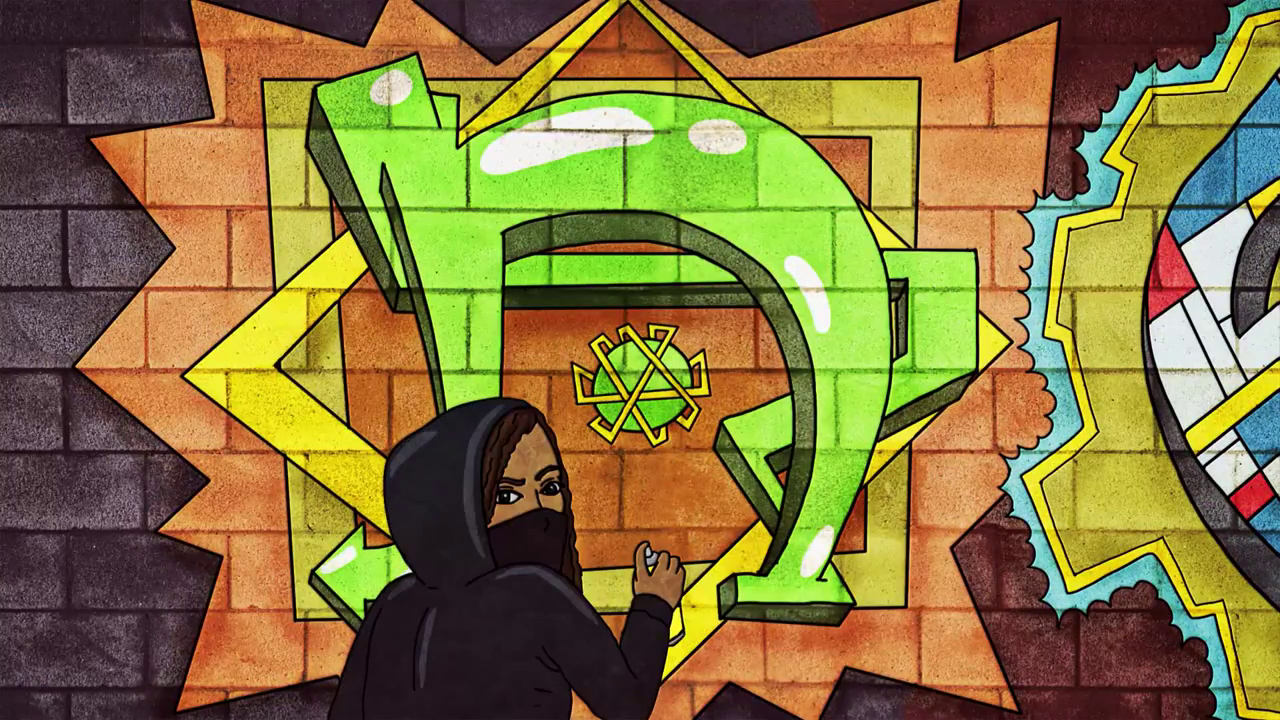This is an archive of original art shared through the project, templates for traditional letter art, as well as several examples of craft and how-to instructions for crafting siddur related works. ☞ Have you made some art you’d like to share for others to copy and redistribute through their assemblage of resources? Have you produced a mizraḥ, shiviti, or birth amulet, or other work that others can use to derive one for themselves or a friend? Upload it here. Filter resources by Collaborator Name Filter resources by Tag Filter resources by Category Filter resources by Language Filter resources by Date Range
Isles Of The Forsaken (ink drawing, 2002) is intended to address the tragic situation of many Jewish women, who, abused, abandoned and wishing a divorce, are refused a get (bill of divorcement) by their husbands who may use their wives’ need for this document as a threat for ransom in obtaining custody of their children. . . . Categories: Tags: Contributor(s): The logo of the Open Siddur Project, as derived from the “color wheel” of the Bauhaus artist Johannes Itten (1961). . . . Categories: Tags: Contributor(s): There are many illustrated siddurim for children. This Illustrated Kabbalat Shabbat Siddur is an illustrated siddur (in Hebrew) for grownups. The purpose of this siddur is to inspire us during prayer, to help us create and maintain Kavana. I chose to create this siddur for Kabbalat Shabbat, since usually at Kabbalat Shabbat we are more relaxed and open. The siddur has all that is needed (Nusaḥ Sefarad) for the Friday night prayers (Minḥah, Kabbalat Shabbat, and Arvit). The drawings accompany Kabbalat Shabbat. . . . Categories: Tags: Contributor(s): Lauren Deutsch designed a High Holy Days greeting card that is a yad (pointer) for all readers to use in their siddurim during services. It also functions as a place holder when one wishes to take a rest from following along. . . . Categories: Tags: Contributor(s): The essential idea of the liturgy of Ushpizin is to invoke the energies of the seven lower Sefirot in the proper order, so that Shefa, blessing and sustenance, can be drawn down into the world. This is the essence of Kabbalistic liturgy, and a liturgy of the imahot would only make sense if it were to follow that pattern. That means we have the playfully serious task of finding a stable order for the imahot where no clear order exists. . . . Categories: Tags: 21st century C.E., 58th century A.M., Ancestors, archetypes, Avot and Imahot, ecoḥasid, in the merit of our ancestors, North America, Prayers inside sukkot, קבלה ḳabbalah, ספירות sefirot, spirits, אושפיזתא Ushpizata, אושפיזין ushpizin Contributor(s): A song by Darshan including the alphabetic acrostic piyyut, El Barukh, part of the morning Yotser Ohr blessing made prior to the Shema at the official beginning of the Shaḥarit service. . . . Categories: Tags: 21st century C.E., 58th century A.M., acrostic, Aleph-Bet, Alphabetic Acrostic, animation, אל ברוך El Barukh, English piyyutim, hip hop, otiyot, Prayers as poems, rap, ספר יצירה Sefer Yetsirah, יוצר אור yotser ohr Contributor(s): A mandala for Ḥanukkah by Brazilian Yemenite Jewish artist, GatoJudeau . . . Categories: Tags: Contributor(s): A shiviti rendered in scalable vector graphic format (SVG) with each textual source linked. . . . Categories: Tags: Contributor(s): |



